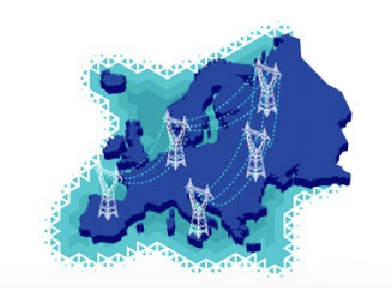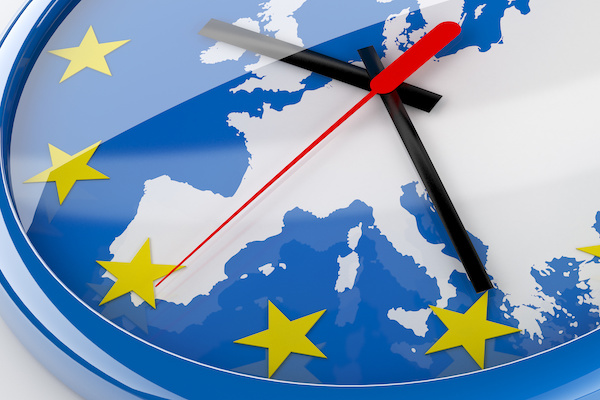15 March 2017
The electricity grid at the heart of the energy transition


The energy transition brings many changes to the electricity system, both as challenges and opportunities, , such as the emergence of new generation means more dependent on weather conditions and more decentralised, or new consumption habits that enhance flexibility and adapt to new uses such as electric vehicles or connected devices. Between production and consumption, the grid is at the heart of the electric system, with system operators further innovating to lead the energy transition. Let us have a glimpse into the future …
The Public electricity grid consists of various power lines, cables and substations, which include transformers to adapt the voltage level. In other words, all the equipment needed to manage and monitor the grid: in France, the distribution network represents 1.3 million kilometers of lines and more than 700 000 substations, whereas the transmission network counts for 105.000 kilometers of high-voltage lines and 2 710 substations. The electricity grid therefore represents a collective good of first importance and essential for the whole electricity system.
Thanks to interconnections, the grid is also the physical realization of the Europe of electricity. Through coordination among Transmission System Operators, RTE improves the functioning of the European market of electricity to enhance the security of supply.
At the local stage, Distribution System Operators are close partners for local authorities to set up plans for land use or travel arrangement, as well as for energy strategies, especially since Positive Energy Territories for Green Growth (TEPCV) have arisen.
Because of the energy transition, new duties and challenges for the electricity grid have emerged to support the deployment of renewable energy sources, which imply more stakeholders that are increasingly decentralized –, the development of new uses (electric vehicles, connected devices, self-consumption) and energy efficiency.
Generation and consumption habits are changing, and so is the grid
Those trends could lead to a decrease in the electricity volume transiting through networks, while increasing the volatility of flows, as significant gaps in generation might emerge within a day or within a year, particularly depending on peaks in variable energy production. Paradoxically, those circumstances might require further development of networks at the local, national and European levels so as to enhance solidarity between various areas of generation and consumption, each complementing one another. From then on, the electricity grid will not only drive electrons from one point to another, but will more and more play an “insurance role” by guaranteeing the access to the expected power, as well as the quality of electricity, in any circumstances.
In this context of deep mutation of the electricity system, system operators are innovating
The grid will keep strengthening or developing substations and lines where need be, but it will also implement new, more flexible scalable solutions to optimize the functioning of existing infrastructures.
Thus, RTE has developped tools to analyse real-time meteorological data. Sensors placed on the lines now provide an accurate value of the lines temperature. This information transits through optical fiber to substations. Because line-capacity increases when cooled, RTE can then decide to take the maximum advantage out of its network, for instance by increasing the amount of electricity which transits through the lines where the wind is blowing. This is an illustration of how RTE can innovate, by developing new prototypes for the new generation of substations. The functions deemed as mature will then be installed in other substations from 2020 depending on the specificity of the territory so as to select the most appropriate functions for each post.
Distribution system operators, such as Enedis and other local distribution companies , are also at the heart of issues related to the increasing digilalisation of the electric sector, in particular with the development of Smart Grids. Various demonstrators of smart grid projects have arisen in France. The Interflex project, managed by Enedis, was notably launched at the end of January. Selected by the European Commission in the framework of the “Horizon 2020” Research and Innovation programme, it will monitor the interactions between sources of flexibility (electric vehicles, storage, aggregation, self-consumption etc…) and the distribution network. This project brings together electricity suppliers, equipment manufacturers, Smart Grids experts and 5 distribution system operators across Europe: Enedis (France), ČEZ Distribuce (Czech Republic), E.ON (Sweden), Enexis (Netherlands) and Avacon (Germany)
This brief overview, far from being comprehensive since innovations are multiplying, cannot overlook smart meters, the essential technology for developing Smart Grids that Enedis and every Local Distribution Company are rolling out. Enedis’s Linky programme aims therefore to install 35 million of those meters by the end of 2021 (3 million were already in place at the end of February 2017), and this industrial programme accounts for 5 billion euros. First step towards the development by providers of new services for consumers, the Linky meter already helps at simplifying reading operations and billing, thus fostering efficiency and saving time for all customers.
The regulation framework must be upgradeable
With the evolution of objectives in energy policy and of the production and consumption means, grid uses are changing substantially and system operators are innovating to build the so-called smart grids. To support those changes, pricing principles should change as well, to reflect both the public service mission of the networks and those new functions provided, while guaranteeing a fair allocation of network costs (and taxes) between all consumers.
Let us hope that public authorities, both from the government and regulators’ side, will support this movement together with all the stakeholders of the electric system.
Find out more
02 June 2020
“Long live Europe”: it’s time for Europe!
25 February 2020
Brexit: love last 47 years


About us
The Union of the French Electricity Industry is the trade association of the French electricity sector. We bring together companies from the whole value chain of the electricity industry.
Find out more









